Oxford, JMW Turner and Creativity
I am delighted to announce that we have a new subscriber in D of Haggerston UK which is a lovely way to conclude the fabulous holiday I have had over the past few weeks in this beautiful country. A very warm welcome to D of Haggerston.
Today we are going to look at some works by the wonderful Joseph Mallord William Turner (1775-1851) whose relationship with Oxford spanned most of his life from the time he was 12 when he was first exposed to the beauty of this city and commenced sketching the streets, colleges and picturesque views around the city.
One of Turner's most important early commissions was for two watercolours to be engraved for the Oxford Almanack, the annual calendar published by the University Press. They were so successful that he eventually completed ten watercolours between 1798 and 1804, and later painted two oils for the local print-seller and frame-maker, James Wyatt, including the celebrated High Street, Oxford (1810). (ashmolean.org)
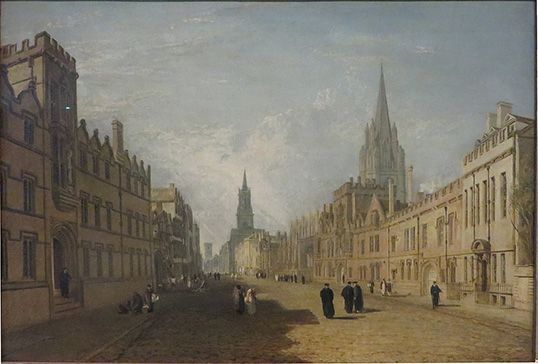
The painting is one of the most fully documented of all Turner’s works because Wyatt kept his correspondence with the artist which was included in his posthumous sale. The original purpose of the commission was to have the design engraved. Wyatt settled on an oil painting, instead of a watercolour, half the size of Turner’s normal canvases, at a cost of 100 guineas. The artist worked on the painting over the winter of 1809–10, consulting Wyatt on the details of the architecture included in the view. The final stage involved the introduction of figures, members of the University and clergy, and some women ‘for the sake of colour’. The painting was exhibited at the Royal Academy in 1812. When, in the 1830s, Turner was choosing views of Oxford for his greatest series of watercolours, he rejected the High Street. He felt that in this painting he had achieved an unparalleled view of technical mastery that he could not repeat. (ashmolean.org)
Let's have a look at some more of Turner's paintings of Oxford which not only reveal the evolution of his artistic style, they also capture the essence of this most picturesque of English cities during a period of burgeoning architectural expansion in the late 18th and early 19th centuries. (Wikipedia)
Below is Oxford from the South-West and it is believed Turner was about thirteen when he painted this simple prospect of Oxford from North Hinksey. Although the composition devotes over two-thirds of the available space to the sky, there is no sense of this having been sketched from nature. Rather, the way the sky is painted is typical of the often perfunctory blue and wash drawings made by most late eighteenth-century topographers, who were more concerned with the accurate representation of a specific place than with recording the transient effects of nature. (tate.org.uk)
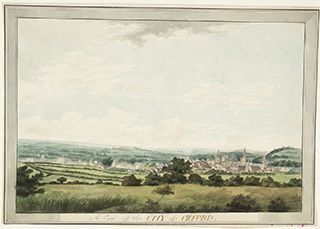
And this Christ Church, Oxford from the River, painted about 1799 when Turner was about 24 years old.
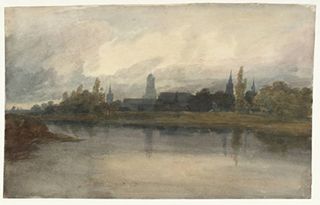
Produced around the same time (1799) was Oxford: Canterbury Gate, Christ Church.
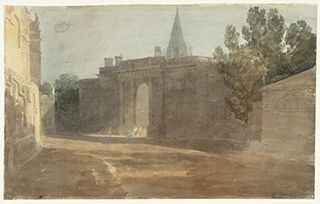
Below is A View of Oxford from the South Side of Headington Hill for the Oxford Almanack for 1808 painted in about 1803-1805. It is a watercolour over graphite, with some scratching out. (ashmoleanprints.com)
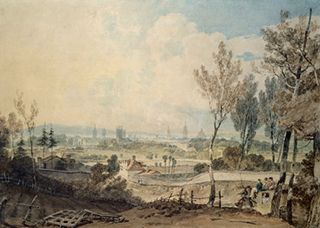
Gradually you can see Turner's style maturing and becoming more exact in its execution. Below is a watercolour painting of Merton College, Oxford (c.1835–8) where Turner concentrates on repairs taking place at the college. The painting would have been considered 'finished'by Turner and his contemporaries. It was probably intended to form part of the long series of watercolours that were published in engraved form as Picturesque Views in England and Wales between 1827 and 1839 (tate.org.uk)
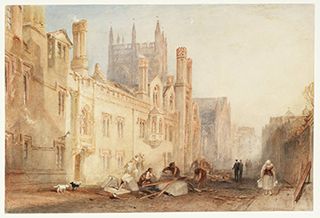
Oxford and the surrounding area is so important that there was a study (The View Cones Study undertaken that sought to understand the importance of this historic landscape and how the views of Oxford’s ‘dreaming spires’ contributes to our understanding and enjoyment of the City’s cultural richness.(oxfordpreservation.org.uk)
There are few cities (with the exception of Venice) that have attracted as much attention from artists and writers as Oxford. And what we must remember is that not only did the artists paint these remarkable scenes, engravers got to work and produced prints so that the beauty could be shared to so many more. Turner offered the printmaker and draughtsman Edward Goodall (1795-1870) a series of lucrative commissions.
Born in Leeds, Goodall was self-taught and owed his proficiency solely to his innate talent and perseverance. (sandersofoxford.com)
The Turner painting below of Oxford from North Hinskey was recreated as an engraving by Goodall.
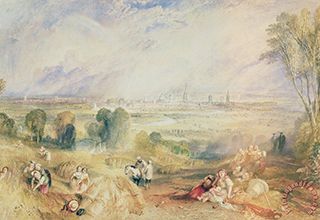
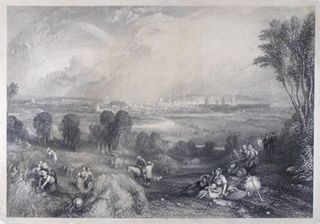
Some you might like to enjoy a short video which discusses Turner's famous painting of the High Street in Oxford shown at the start of the blog.
